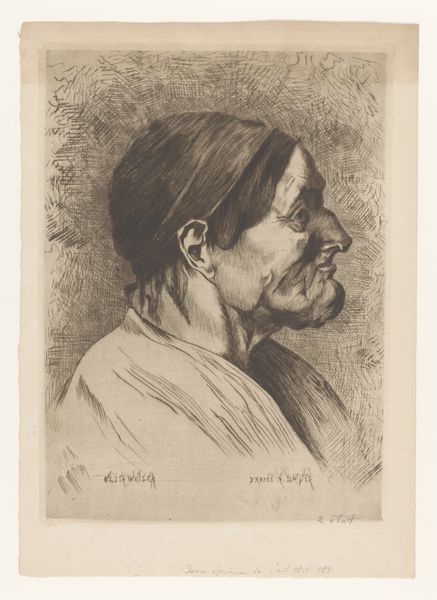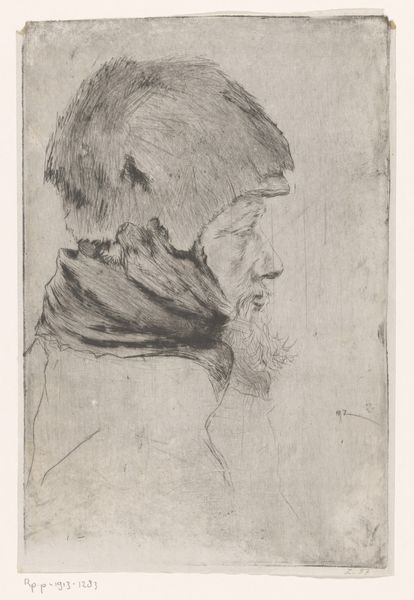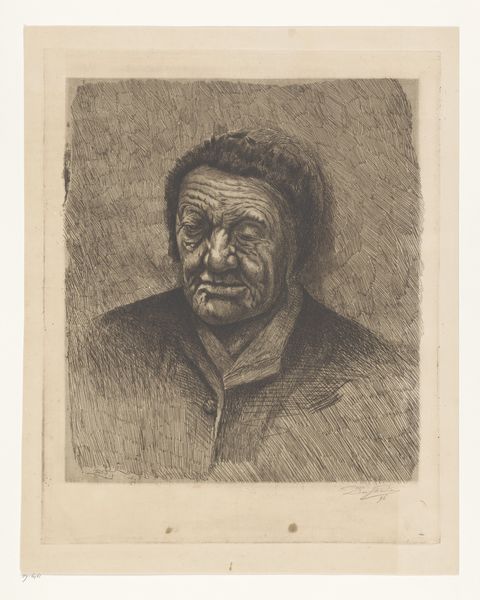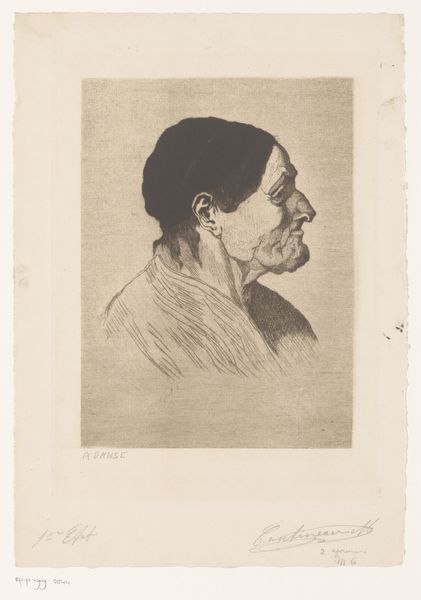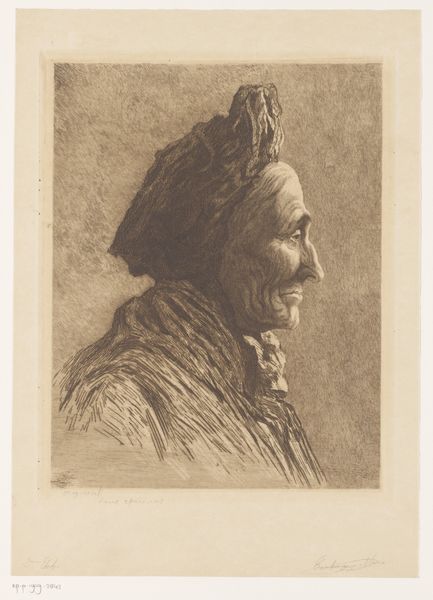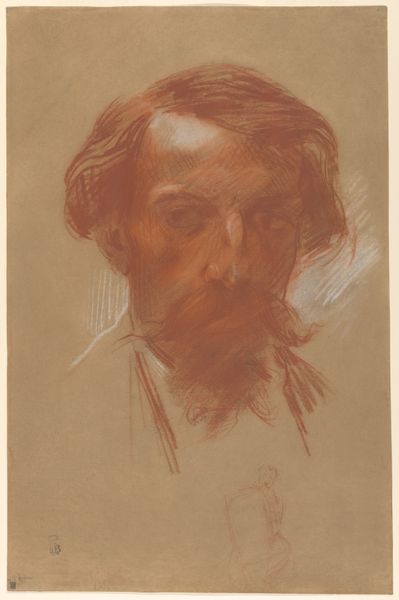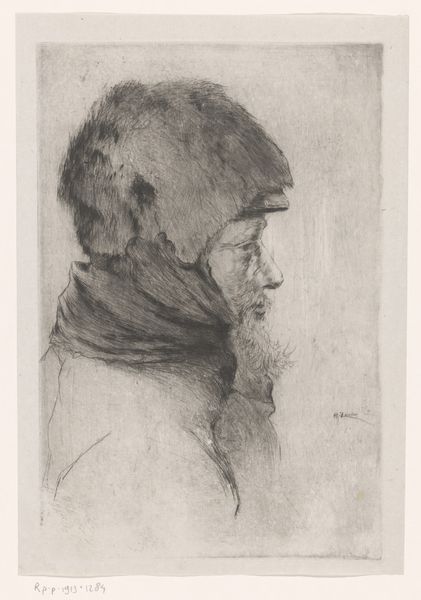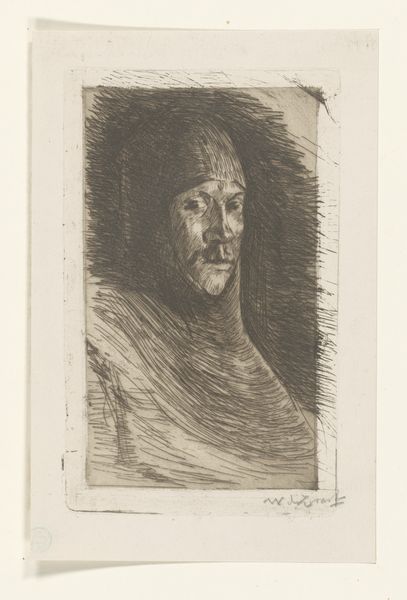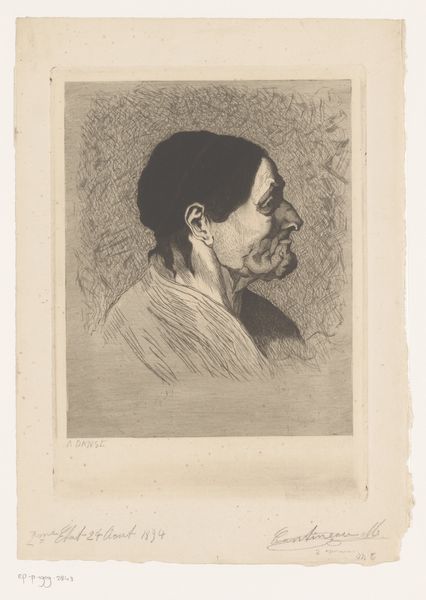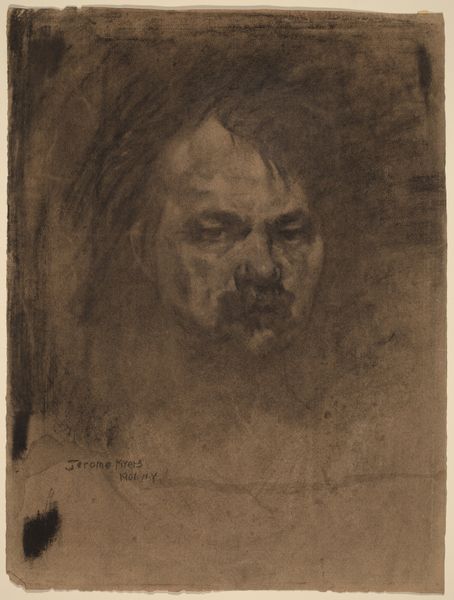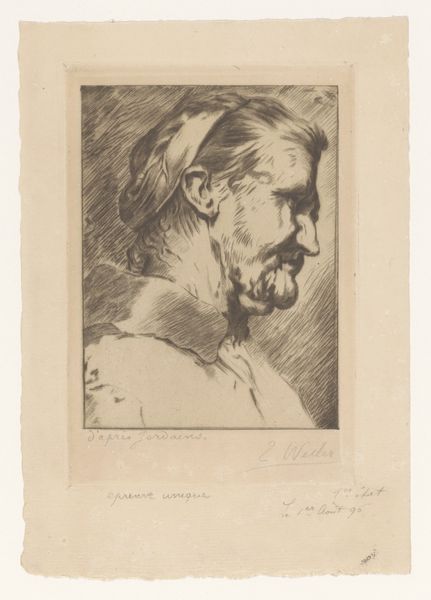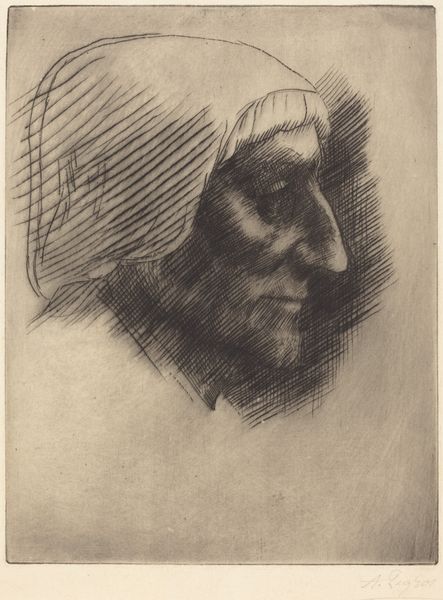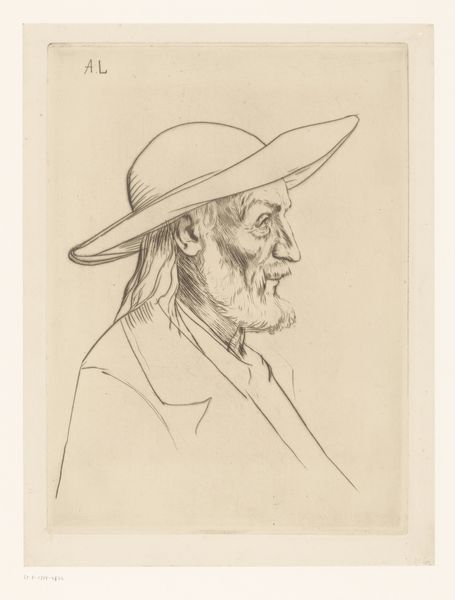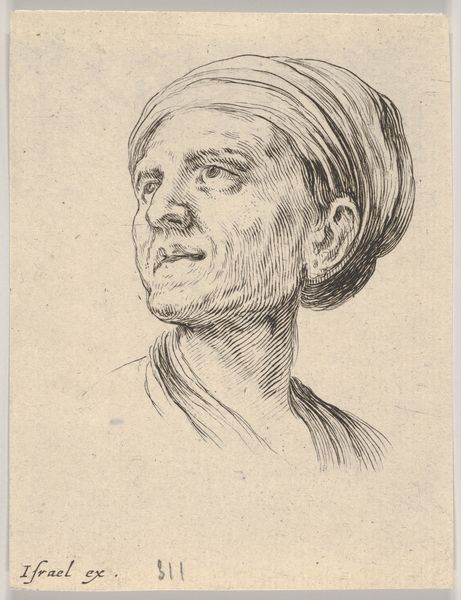
drawing, dry-media
#
portrait
#
drawing
#
caricature
#
figuration
#
dry-media
#
pencil drawing
#
line
#
portrait drawing
#
realism
Dimensions: height 409 mm, width 295 mm
Copyright: Rijks Museum: Open Domain
Editor: This is "Hoofd van een oude vrouw," Head of an Old Woman, a pencil drawing from somewhere between 1875 and 1913 by Elisa Weiler. It strikes me as quite unforgiving in its realism; every wrinkle and sag seems purposefully emphasized. What are your initial thoughts about it? Curator: It's interesting how you pick up on the unforgiving aspect. This piece comes at a fascinating time, when ideas around the representation of marginalized communities were starting to shift. Before, depictions of old age, especially of women, were often sentimental or moralizing, aimed to teach lessons of virtue or the passage of time. But here, we see a starkness. What do you think is the effect of showing the elderly figure so realistically? Editor: Perhaps it’s a move towards a more honest portrayal? An attempt to challenge the societal pressure to conceal aging, particularly for women. It makes me think of photography's influence on art at that time, moving away from idealization towards a record of lived experience. Curator: Precisely! And consider who has historically controlled the representation of such figures. Often, it's the dominant social group, dictating the visual narrative. Weiler seems to subvert this. Look at the lines: not delicate or softening, but bold and unflinching. It questions who has the authority to depict whom, and how. What effect do you think that might have on contemporary viewers of Weiler’s work? Editor: I would imagine it served to bring a new perspective on subjects, but potentially to elicit diverse, polarizing reactions given those cultural dynamics and ingrained assumptions. Now, the portrait reads almost as a study in resilience; a defiance against erasure. Curator: Indeed. It reframes the visual language. Instead of reinforcing stereotypes, it invites the viewer to confront preconceived notions. We move away from a one-dimensional representation to a deeper consideration of individual worth. Editor: I now have a deeper insight into the politics inherent in this portrait. Thanks to your framing, it's no longer "just" an old woman's head. I appreciate it's invitation to unpack embedded social critiques and its influence in subverting the status quo. Curator: Glad I could help clarify. And, perhaps, the subversion that occurred is now our status quo when we appreciate works such as Weiler's today.
Comments
No comments
Be the first to comment and join the conversation on the ultimate creative platform.
